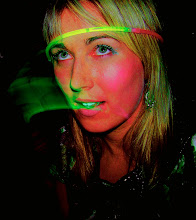
He starts off by talking about the smash-able brand, a familiar story and concept illustrated by the fact that the Coke bottle was designed to be recognisable even when smashed into many pieces.

Martin also set up an experiment with fake billboards in the LA. 1 billboard with a Marlboro cowboy on one billboard and a Marlboro logo on another. When they looked at the craving in the brain, there was much more craving when they looked at the logo free poster they craved a lot more. Consumers were turned off by the logo as they felt that they were being marketed to. Tobacco brands are the ultimate smashable brands given the stringent restrictions on the use of logos etc. They are successful because they have been smashed.
But the really interesting part of the discussion was about mirror neurons and rituals. If you've read HERD you'll be familiar with mirror neurons. Essentially it was discovered in 1989 that there are "empathy" neurons which fire when you observe someone doing something. For example if you watch a football match and your brain is scanned, your brain scan will be the same as that of the footballer.

But how do all these points link up? Well we all know how successful the iPod was in it's rapid conquest of the market and we all have noticed that the white headphones are and obvious brand statement. Apple's stroke of genius was to break the category rules by creating white headphones - they are a smashable brand. In this wa the brand is more of an experience, a tribal identity badge than a product.

Moving more towards explicit rituals Martin Lindsrom gives us an example of Corona's success with it's lime ritual. He mentions how the product also exists in a lime version but consumers still prefer the original version when they put the lime in themselves and find the product 62% tastier once they've carried out this ritual.
Essentially it's monkey see monkey do...but for us thinking, consuming monkeys it's monkey see, monkey do, monkey tells himself he's done it for himself, because it's better.

Another great example he mentions is about a large cosmetics brand he worked on and built in a particular ritual of how to apply the cream. The ritual is only 7 years old but now 91% of it's consumers use the ritual and feel that the cream works better when they do it...and with this placebo effect, it most likely does!


No comments:
Post a Comment